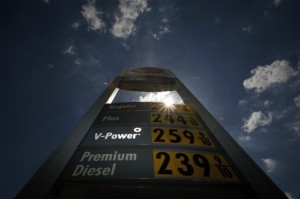MANILA, Philippines— PNOC Exploration Corp., the upstream oil and coal arm of state-run Philippine National Oil Co., has bagged three new contracts to explore and develop prospective coal blocks in Mindanao.
In a disclosure to the Philippine Stock Exchange Monday, PNOC-EC reported that it was awarded by the Department of Energy Coal Operating Contract (COC) Nos. 184, 185 and 186, which were all ffered previously under the fourth Philippine Energy Contracting Round.
“At this point, we are waiting to receive the signed COC contracts from the DOE,” the company said.
According to PNOC-EC, COC 184 (offered as Area 19B) covered 3,000 hectares of three coal blocks spanning across Trento, Agusan del Sur and Lingig, Surigao del Sur.
COC 185 (or Area 29) covers 2,000 hectares over the municipalities of Buug and Malangas in Zamboanga Sibugay. This particular COC included two coal blocks, which are located in the northeastern part of the Malangas coal district, where PNOC-EC’s underground coal mines are currently operating under the development and production phase.
Meanwhile, COC 186 (Area 30A) is composed of five coal blocks spanning across 5,000 hectares of land in the municipalities of Imelda and Malangas, also in Zamboanga Sibugay.
Through the awarding of such contracts, the DOE is hoping to further boost exploration activities in a country as under-explored as the Philippines. Although the coal and petroleum exploration in the country continues to attract private sector interest as evident in the number of proposals submitted under PECR 4, the Philippines still has a huge resource potential that remained untapped.
Current coal production also remained largely inadequate in serving local demand.
Data from the DOE showed that the Philippines has in-situ coal reserves of about 446 million metric tons, or 18.8 percent of the country’s total coal resource potential of 2.37 billion metric tons.
The PECR 4 was precisely envisioned to address the security of the country’s energy supply through the exploration of local indigenous resources. Harnessing local resources is expected to help the country meet its daily demand and reduce the importation of petroleum and petroleum products.
More importantly, developing the country’s own resources is deemed to be a long term plan of action that will reduce the country’s dependence on imported petroleum and mitigate the effects of oil price volatility.


